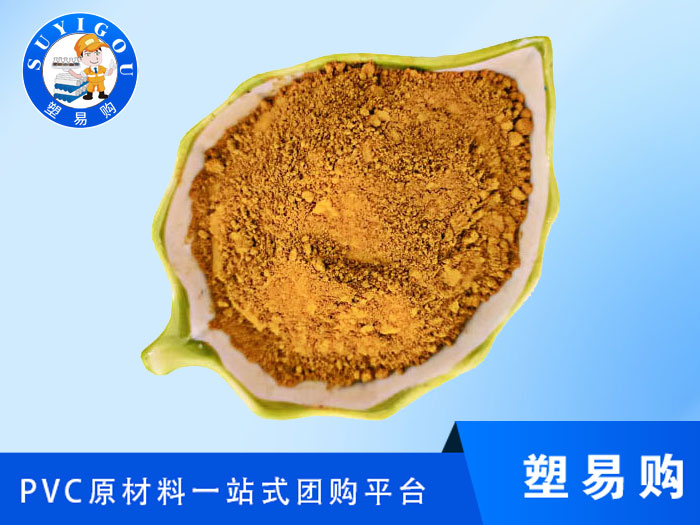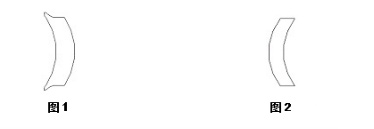Because the plastic profile is asymmetrical structure and has the characteristics of low thermal conductivity, heating and cooling are difficult, the molding process is heated, cooled, and has the functions of shearing, friction, adsorption, traction, pressing, etc. Under the force, the corresponding internal stress will inevitably be generated. Its internal stress has a great influence on the strength of the profile. Although it is impossible to completely eliminate it, it is still possible to reduce the effect and influence of internal stress on the strength of the profile as much as possible through the corresponding analysis of its internal stress and the use of corresponding methods.
The internal stress of plastic profiles can be roughly divided into structural stress and temperature stress. There are also some stresses that lie between the two and are difficult to clearly delineate. The structural stress is mainly formed by the discontinuous force transmission, sudden change or concentration of stress caused by the structural factors of the profile under the action of external force. Structural stress is further divided into corner transition stress and wall thickness uneven stress. Profile structural stress is relatively easy to solve. When designing the mold, at the transition of the corners of the profile and the intersection of different wall thicknesses, the transition form of arc or bevel is adopted to slow down the force transmission resistance as much as possible and reduce the damage caused by stress concentration. The temperature stress is mainly caused by uneven heating and cooling during the extrusion process of the profile, or the local cooling rate is too fast, so that part of the stress cannot be released synchronously, and is solidified inside the profile, or the parison and the profile are not completely cooled. , formed under the action of a certain external force. There are many reasons, and it is difficult to eliminate them. It can dialectically analyze the ways and causes of temperature stress, and prescribe the right medicine to reduce or solve it as much as possible.
The way and reason of temperature stress in production process
In the extrusion production process of plastic profiles, what are the ways and reasons for the extrusion process
What about temperature stress concentration?
Teacher Yang Zhongjiu believes that there are three main ways and eight reasons:
1. The uneven discharge of the die produces the section stress and axial stress of the parison
①External heating of the machine head and transition section is improperly set, resulting in section stress of the profile

After the melt material is extruded by the extruder, it passes through the head, the transition section and the uniform distribution plate to prepare for the final passage through the die. Since there is no internal heating of the melt material at this stage, the external heating at this stage is mainly to change the moving direction of the material and make up for the frictional heat loss between the material and the machine head, the transition section, and the uniformly distributed disk. If the heat provided is too large or too small, the temperature difference will be generated on the material on the section, which will cause the parison to generate section distortion stress.
②Axial stress of parison caused by uneven heating temperature outside the die
The reason is the same as above. Due to the different amount of material held in each part of the parison section, when the melt material passes through the die, the heat required by the material in each part of the parison section is also different. The heat provided cannot be adapted to it, and the material is passing through
When die, the flow rate and resistance will also be different. This difference will not only cause the parison to produce a certain axial bending stress, but even deform.
2. The parison section and axial stress caused by the resistance of the sizing die
①After the parison is extruded through the die, it enters the shaping die and is vacuum adsorbed and cooled, so that the parison is transformed from a melt to a solid. Under the action of vacuum adsorption resistance on the inner wall of the shaping die, the profile between the shaping die and the tractor bears the corresponding axial tensile stress. The tensile stress is related to the vacuum degree of the mold.
②When the parison is vacuum adsorbed and cooled by the shaping die, due to the different amount of material and heat held by each part of the section, the required cooling amount provided by each part of the section of the shaping die is also different. If the amount of cooling water provided by the shaping die cannot effectively remove the heat of the material in each part of the section of the parison, the profile shaped by the shaping die will generate corresponding axial bending stress or even deformation.
③When the parison passes through the vacuum adsorption and cooling of the shaping die, due to the different amount of material held by each part of the section, the contact surface and the friction force generated by the inner wall of the shaping die are different. The degree of vacuum cannot effectively adjust its frictional force, and the profile shaped by the shaping die will generate corresponding axial bending stress, and the profile may even be deformed in severe cases.
④When the parison is vacuum-adsorbed and cooled by the shaping die, only the outer wall of the visible surface of the parison is cooled by the vacuum-absorption of the shaping die, and the inner cavity ribs of the parison cannot be cooled synchronously. When the outer wall of the parison cools and shrinks, under the action of vacuum adsorption, it still has to move forward against the inner wall of the shaping die, and the outer wall of the parison is subject to the corresponding tensile stress of the section. After exiting the shaping die, the outer wall shrinks sharply in the free state, and the inner cavity rib is subjected to the corresponding section extrusion stress, and even forced to deform. At the same time, with the post-shrinkage phenomenon caused by the gradual cooling of the inner cavity ribs, the outer wall of the profile is subjected to cross-sectional shrinkage stress, and even axial grooves are generated. If the cooling water is reversely connected (it should be connected in reverse), when the high-temperature melt enters the shaping die, it will directly exchange heat with the cooling water inlet water source of the shaping die. Due to the large temperature difference between the two, the above phenomenon is more obvious.
3. Profile section and axial stress caused by the speed and pressure of the tractor
①When the profile is extruded, in order to make the exit parison from the die pass through the shaping die smoothly, the traction speed is generally higher than the extrusion speed, so as to prevent the parison from entering the shaping die difficult and material blocking. However, if the traction speed is too large, it will not only reduce the wall thickness of the parison, but also cause the parison between the die outlet and the setting die to be subjected to excessive axial tensile stress.
②When the profile passes through the tractor, although the profile has been formed and the outer wall has been basically cooled and hardened, the inner wall has not been completely cooled due to the characteristics of PVC that is difficult to cool. If the traction force is too large, the profile will be under the action of positive pressure. Corresponding section extrusion stress and even deformation are generated.
Methods to reduce and solve the internal stress of profiles
1. The solution to the internal stress of the parison caused by the uneven discharge of the die
①According to the shape of the die exit parison, adjust the set temperature of the machine head and the transition section, as shown in Figure 1 and Figure 2.

Figure 1 shows that the set temperature of the machine head and transition section is too high and should be appropriately lowered.
Figure 2 shows that the set temperature of the machine head and transition section is low and should be appropriately increased.
②Repair the mold according to the deviation of the die material, and try to make the die flow channel evenly distribute the material demand according to each part of the parison section.
③Adjust the set temperature of each part of the heating ring outside the die according to the bias flow of the die material.
2. Solution to the internal stress of the parison caused by the resistance of the shaping die
①On the premise of ensuring the appearance quality of the parison molding, appropriately reduce the vacuum degree of the shaping die.
②According to the amount of material held by the section of the parison or the bending condition of the profile after it is out of the shaping die, the amount of cooling water is adjusted accordingly.
③According to the bending situation of the shaped model material, adjust the vacuum degree of each part of the shaped die section accordingly.
④ Before the parison enters the setting die, use a copper needle to poke several small holes in the corresponding part of the inner rib of the parison, so that the inner rib and the outer wall are open, so as to strengthen the cooling effect of the inner rib. Check the cooling water pipe of the shaping die, install the water inlet pipe at the end of the shaping die, and cool the parison to reverse heat transfer. The infrared thermostat installed at the rear of the shaping table is used to perform aging temperature adjustment on the profiles, so as to release the concentrated stress existing locally.
3. The solution to the stress caused by the speed and pressure of the tractor
①On the premise of ensuring the smooth extrusion of the profile and the wall thickness meeting the requirements, the ratio of traction to extrusion speed should be minimized.
②Under the condition of ensuring the smooth traction of the profiles, try to reduce the traction pressure as much as possible. If the effect is not obvious, the extrusion speed can be appropriately reduced.
Questions and discussions
Bending deformation of plastic profiles occurs during extrusion, which is mostly a manifestation of uneven stress release. Although local heating and cooling methods can also be used to correct the bending deformation phenomenon, the released internal stress is often re-assembled inside the profile, which is actually a cure for the symptoms rather than the root cause.
When the profile is bent and deformed, the correct treatment method should be to find out the cause and prescribe the right medicine. If it is the problem of the die runner, it should be solved by the method of repairing the die; if it is the problem of the die temperature, it should be solved by the method of adjusting the temperature of the die. Although the die temperature adjustment method can also correct the bending deformation of the parison caused by the uneven flow passage of the die to a certain extent, it will increase the internal stress of the profile and affect the strength of the profile, so it should be used with caution.
Contact:
+86 13662789083/Miss zhengContact:
+86 13620073040/Mr. QianAddress:
Dongguan City Zhongtang Town Daxinwei RoadAbout us
-Company Profile -Company image -Video -Customer -Contact usProduct
-Plasticizer -Stabilizer -CPE -Stearic acid -More...Applications
-Resin tile application -Pipe and Fitting Application -Profile application -Cosmetic application -More...News
-Knowledge -Industry -QuestionMobile terminal
WeChat QR code
Applets